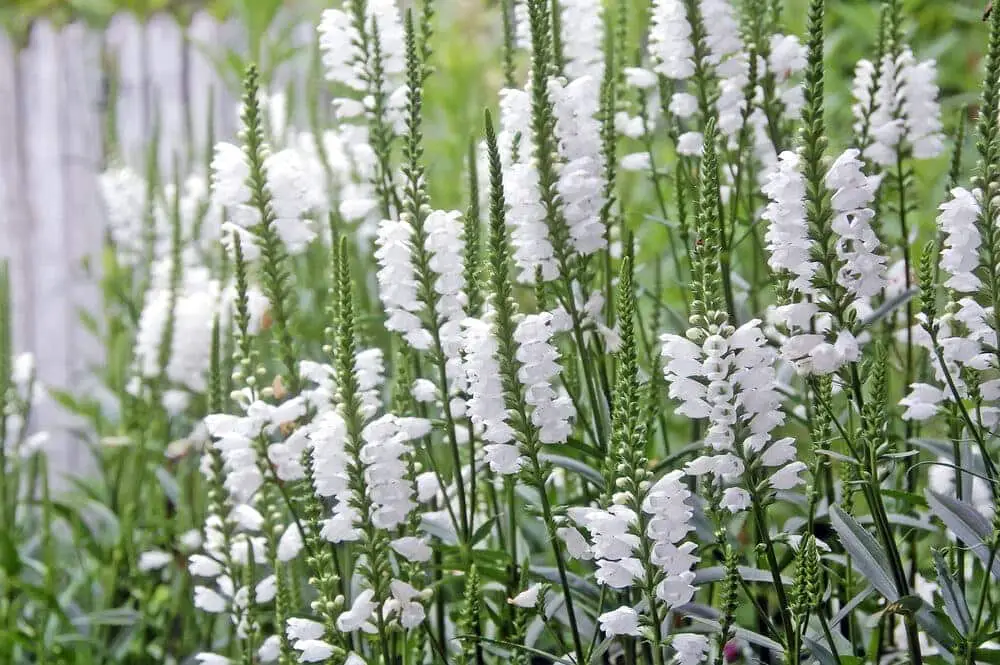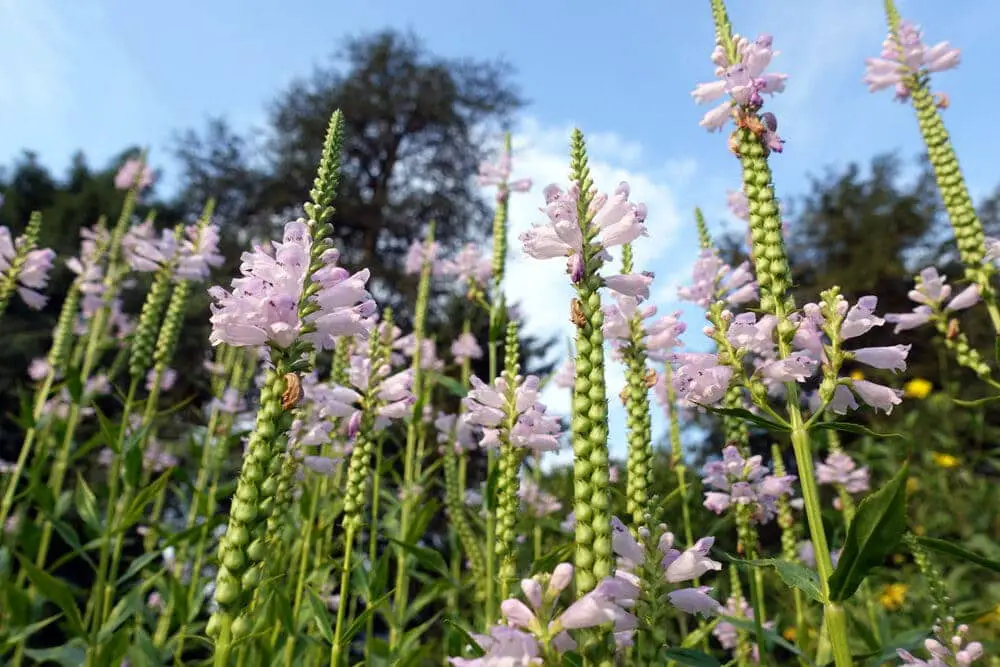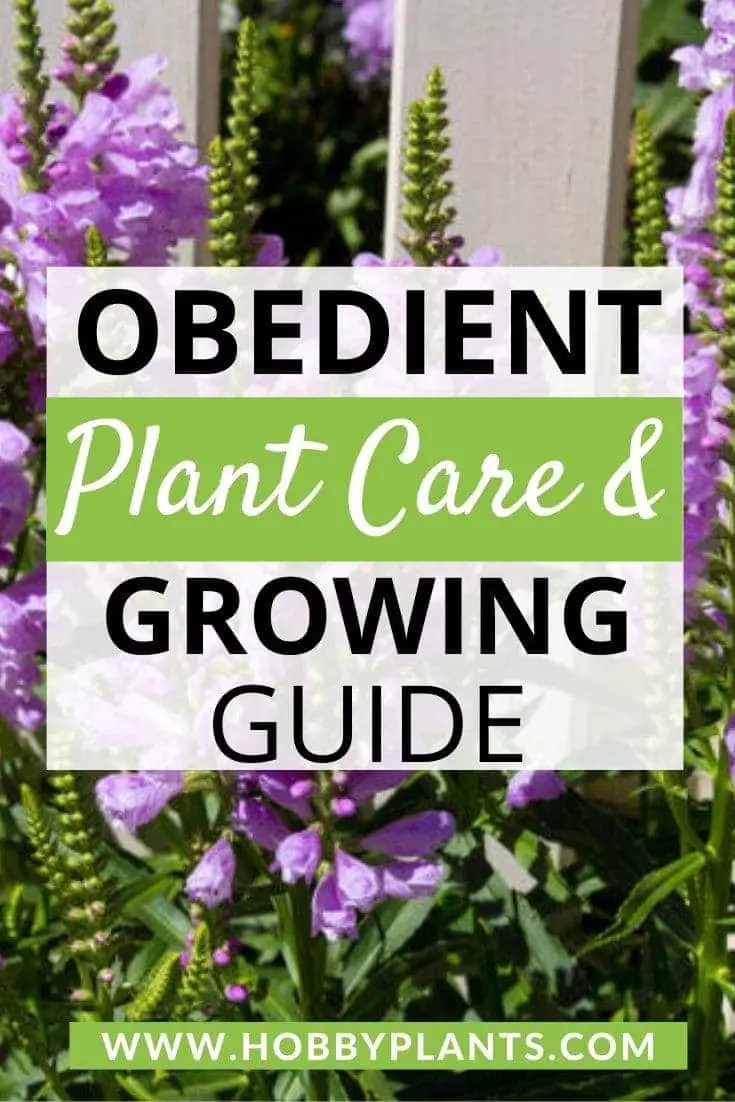The Obedient plant is colorful and could be just the thing you need to brighten up your garden.
There are a number of things that you will need to know about this plant before getting started, as it can be somewhat finicky. The more you learn about this plant, the easier it will be to grow.
Varieties
There are a few different obedient plant varieties that you’ll want to know about before learning anything else.
1. Variegata Obedient Plant
The Variegata variety of this plant can be grown in hardiness zones 3 through 9, and it is characterized by green foliage with cream-colored edges. This plant produces bright pink flowers when it blooms.
2. Vivid Obedient Plant
The Vivid obedient plant can grow up to two feet tall, and it produces purple tubular flowers haflway through the summer. You can grow this particular variety of plant in hardiness zones 2 through 8.
Obedient Plant Care & Growing Guide
1. Light Requirement
You will find that obedient plants tend to thrive in full direct sunlight. While it is possible to grow them in partial shade, doing so in the fall is not recommended. Partial shade in the hottest months of the year can actually protect the plant’s foliage.
2. Water
When you are first growing this plant, you’ll need to make a point of keeping the soil moist but not too saturated. This plant only needs to be watered once or twice a week at most once it is established.
An easy way to tell if you should water your obedient plant is by sticking your finger into the soil. If the soil is dry an inch down, it needs a drink. You don’t want to over water this plant, as this can lead to root rot quite rapidly.
3. Climate
Obedient plants can be grown in USDA hardiness zones of 3 through 10. These plants thrive in regions that get bright sunlight for most of the year. Hot, dry climates are best for the obedient plant.
4. Soil
You’ll want to grow your obedient plant in semi-acidic soil with a pH of 5.5 to 6.3. These plants can do well in fair to poor soil, provided it drains well. Fertilization is not necessary with these plants, unless they are showing clear indications of a nutritional deficiency.
You can grow these plants from seeds or cuttings, so you’ll want to keep that in mind as well. Make sure that the soil is kept moist but not drenched, as root rot can quickly become a very serious problem that is difficult to contend with.
5. Temperature
The best temperature range for obedient plants is 60 to 80 degrees Fahrenheit. These plants tend to do very well in extremely hot regions with minimal humidity.

6. Repotting
When you are going to repot obedient plants, it is important that you choose a container that 1-2 times larger than its current container. This will give your plant room to grow so the roots don’t get tangled up, which can be very problematic. Also, remember to use a rich, well-draining soil.
7. Speed of Growth
These plants tend to grow pretty quickly when they are exposed to bright direct sunlight. They grow significantly slower in partial shade.
8. Height and Spread
Obedient plants can grow up to 8 feet tall and 3 feet wide.
9. Flowers
Depending on the variety, obedient plants can produce purple, white or pink flowers that are very beautiful. These plants bloom in the late summer or early autumn months.
10. Trimming
Occasional trimming is necessary with obedient plants, but you should only do so in spring. Make sure that you get rid of all the previous foliage. You can use the old foliage to keep the plants healthy during the winter months.

Can Obedient Plants Grow in Water?
You can grow obedient plants in your pond. Put the potted plant a couple of inches beneath the surface of the water. This can really add a nice aesthetic to your garden.
How to get Obedient Plants to Flower
If you want to get your obedient plant to flower, you’ll need to make a point of keeping it in direct bright sunlight. Keep in mind that this plant will begin to bloom in the late summer to early spring months. These plants usually keep their flowers until late fall.
Common Obedient Plant Diseases
While disease is not usually a big problem with obedient plants, slugs can be a huge issue. You can use wood ashes or diatomaceous earth to keep these pests away. Slugs can do a lot of damage to these plants within a short amount of time, so you’ll have to take measures to keep them away.
Pine needles and even coffee grounds on the plant’s foliage can also serve as an effective slug deterrent. Anything that has a rough or abrasive texture is worth trying.
One of the best things about this plant is that it is resistant to rabbits and deer, so you won’t have to worry about them munching on the foliage.
Conclusion
- It is important that you keep your obedient plant in direct bright sunlight as much as possible.
- While these plants can grow in partial shade, they grow much slower and don’t produce as many flowers.
- When you are establishing your obedient plant, you will need to keep the soil decently moist all times.
- Once you have established your plant, you’ll only need to water it once the soil is dry an inch deep.
- These plants prefer hot, dry regions with an average temperature range of 60 to 80 degrees Fahrenheit.
- Obedient plants can grow up to 8 feet tall and 3 feet wide, so make sure you find a place where yours can really spread out.
- The best way to get these plants to flower is to make sure they get a good amount of direct sunlight. Planting outdoors is the best way to get it to bloom fully.
- Disease is usually not an issue with obedient plants, but slugs can damage them very quickly.

Victoria is the owner and main author of hobby plants. She loves spending her free time in her garden planting and taking care of her plants. Victoria hopes you enjoy the content here!
![Mother Of Thousands Plant [Complete Plant Care Guide] Mother Of Thousands Plant [Complete Plant Care Guide]](https://www.hobbyplants.com/wp-content/uploads/2022/07/mother-of-thousands-plant-300x158.jpg)
![Majesty Palm Plant Care: [Complete Beginner's Guide] Majesty Palm Plant Care: [Complete Beginner's Guide]](https://www.hobbyplants.com/wp-content/uploads/2022/08/majesty-palm-care-300x158.jpg)
![Exotic Angel Plant Care: [Complete Beginner's Guide] Exotic Angel Plant Care: [Complete Beginner's Guide]](https://www.hobbyplants.com/wp-content/uploads/2022/08/exotic-angel-plant-care-300x158.jpg)
![Snow White Waffle Plant: [Complete Care Guide] Snow White Waffle Plant: [Complete Care Guide]](https://www.hobbyplants.com/wp-content/uploads/2022/08/snow-white-waffle-plant-300x158.jpg)
![Waffle Plant Care: [Complete Beginner's Guide] Waffle Plant Care: [Complete Beginner's Guide]](https://www.hobbyplants.com/wp-content/uploads/2022/08/waffle-plant-300x158.jpg)
![Bird Of Paradise Plant Care: [Complete Beginner's Guide] Bird Of Paradise Plant Care: [Complete Beginner's Guide]](https://www.hobbyplants.com/wp-content/uploads/2022/08/bird-of-paradise-plant-300x158.jpg)
![Purple Passion Plant Care: [Complete Beginner's Guide] Purple Passion Plant Care: [Complete Beginner's Guide]](https://www.hobbyplants.com/wp-content/uploads/2022/08/purple-passion-plant-care-300x158.jpg)
![China Doll Plant Care: [Complete Beginner's Guide] China Doll Plant Care: [Complete Beginner's Guide]](https://www.hobbyplants.com/wp-content/uploads/2022/09/china-doll-plant-care-300x158.jpg)
![Polka Dot Plant Care: [Complete Beginner's Guide] Polka Dot Plant Care: [Complete Beginner's Guide]](https://www.hobbyplants.com/wp-content/uploads/2022/09/polka-dot-plant-300x158.jpg)
![Mona Lisa Lipstick Plant Care: [Complete Beginner's Guide] Mona Lisa Lipstick Plant Care: [Complete Beginner's Guide]](https://www.hobbyplants.com/wp-content/uploads/2022/09/lipstick-plant-mona-lisa-300x158.jpg)
![Yucca Cane Plant Care: [Complete Beginner's Guide] Yucca Cane Plant Care: [Complete Beginner's Guide]](https://www.hobbyplants.com/wp-content/uploads/2022/09/yucca-cane-plant-care-300x158.jpg)
![Bush On Fire Croton Plant Care: [Complete Beginner's Guide] Bush On Fire Croton Plant Care: [Complete Beginner's Guide]](https://www.hobbyplants.com/wp-content/uploads/2022/09/bush-on-fire-croton-300x158.jpg)